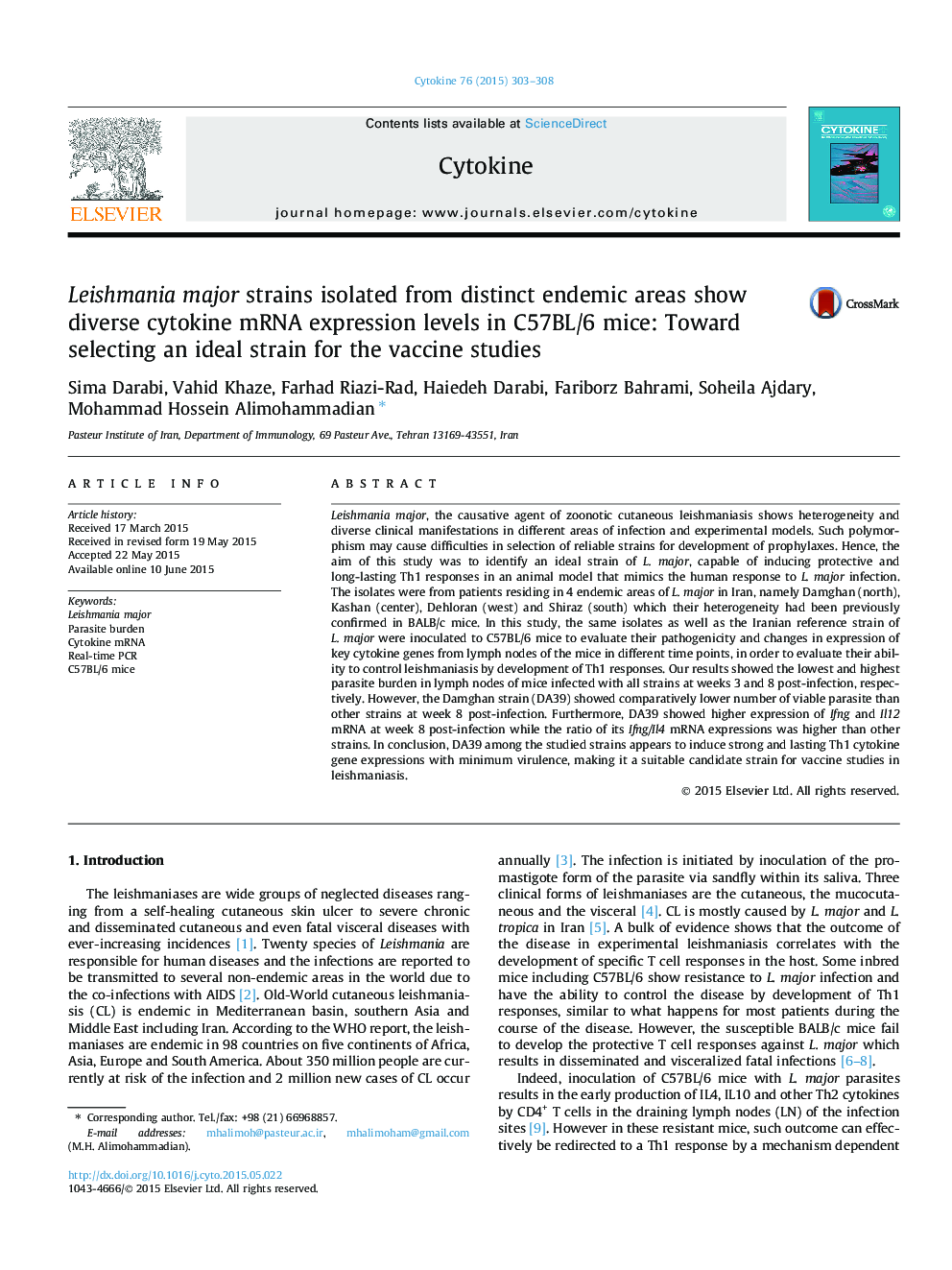| Article ID | Journal | Published Year | Pages | File Type |
|---|---|---|---|---|
| 2793971 | Cytokine | 2015 | 6 Pages |
•Pathogenicity/parasite burden of 4 L. major strains were compared in C57BL/6 mice.•The expressions of C57BL/6 cytokine gene induced by the 4 strains were evaluated.•Strain DA39 showed higher expression of Ifng and Il12 at week 8 post-infection.•The ratio of Ifng/Il4 mRNA expressions in DA39 was higher than the other strains.•DA39 appears as a suitable strain for leishmaniases vaccine studies.
Leishmania major, the causative agent of zoonotic cutaneous leishmaniasis shows heterogeneity and diverse clinical manifestations in different areas of infection and experimental models. Such polymorphism may cause difficulties in selection of reliable strains for development of prophylaxes. Hence, the aim of this study was to identify an ideal strain of L. major, capable of inducing protective and long-lasting Th1 responses in an animal model that mimics the human response to L. major infection. The isolates were from patients residing in 4 endemic areas of L. major in Iran, namely Damghan (north), Kashan (center), Dehloran (west) and Shiraz (south) which their heterogeneity had been previously confirmed in BALB/c mice. In this study, the same isolates as well as the Iranian reference strain of L. major were inoculated to C57BL/6 mice to evaluate their pathogenicity and changes in expression of key cytokine genes from lymph nodes of the mice in different time points, in order to evaluate their ability to control leishmaniasis by development of Th1 responses. Our results showed the lowest and highest parasite burden in lymph nodes of mice infected with all strains at weeks 3 and 8 post-infection, respectively. However, the Damghan strain (DA39) showed comparatively lower number of viable parasite than other strains at week 8 post-infection. Furthermore, DA39 showed higher expression of Ifng and Il12 mRNA at week 8 post-infection while the ratio of its Ifng/Il4 mRNA expressions was higher than other strains. In conclusion, DA39 among the studied strains appears to induce strong and lasting Th1 cytokine gene expressions with minimum virulence, making it a suitable candidate strain for vaccine studies in leishmaniasis.
Graphical abstractFigure optionsDownload full-size imageDownload as PowerPoint slide
